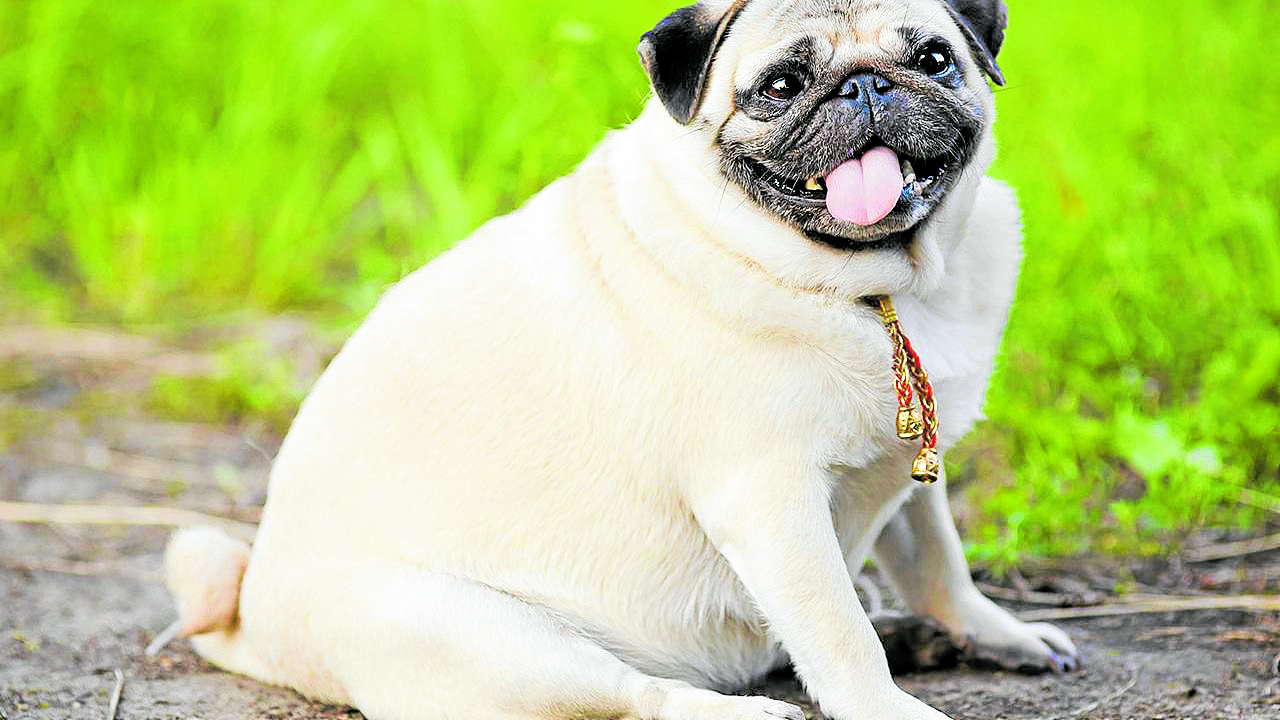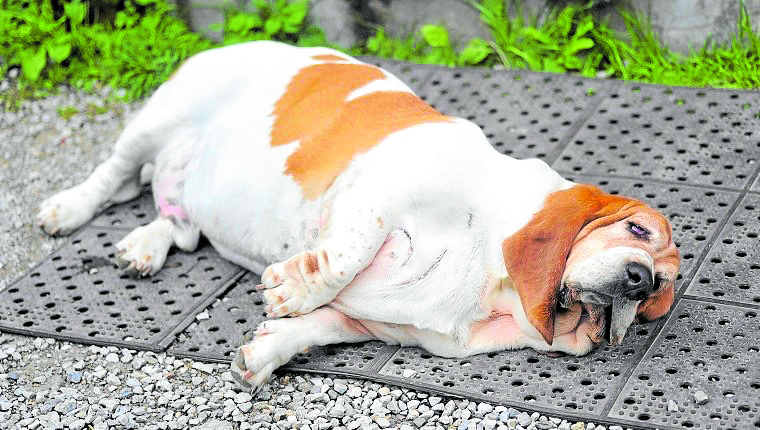
Obesity in pets is defined as their having more than 20 percent of their standard weight.
There are many variations in body size of pets, especially with different breeds, so it is best to ask your vet if your dog is overweight.
But there is a simple way to assess your dog: Looking from the top, you should see that his waist is still defined. You can easily feel his rib cage with your fingertips, but its outline should not protrude from his torso. If his waist bulges out, then he is overweight.
What makes a pet obese?
1. Lack of exercise. If your pet doesn’t have much activity, it will be prone to obesity, especially if you don’t control its food intake. Exercise will not only make your pet healthy, it is also essential for its well-being. Bored pets may become destructive and unruly. Make sure your pets get enough exercise.
2. Excessive food intake. Feeding more than what his body needs results in obesity, just like us humans. The recommended feeding amount is usually 3 to 5 percent of your pet’s total body weight.
Many of us consider food as a reward, but giving treats should be minimal. If possible, make your own. You can oven-bake any meat and your pet will love it. And, of course, it’s preservative-free.
3. The genes factor. Like humans, an overweight pet may be attributed to his genetic makeup, and that is where you intervene.
4. The quality and quantity of food. In my previous articles, I cited the importance of a meat-based diet for both dogs and cats. A diet that is high in carbohydrates will make your pet obese; a meat-based diet will make him less likely so. The amount and frequency of meals and snacks are also important to manage weight in dogs. Sadly, most obese pets are those fed with cheap commercial pet food.
5. The age factor. As your pet ages, it requires less energy from food and its metabolic rates are generally slower.
Generally, older or less active pet owners have overweight pets, due to less activity in both pet and owner. Ask your veterinarian on how to address this change in your senior pet’s lifestyle.
6. Neutering. Neutering your pet will not make him obese, but he will be prone to being overweight because neutering will slow his metabolism due to loss of sex hormones. There are studies that recommend lessening the food intake of neutered pets by up to 30 percent.

Health issues
Obesity in pets should be taken seriously. Sure, they look cute and spoiled but excess weight is a health risk for them. It affects their longevity, and we all want to be with our pets for as long as we could, so addressing their weight should be taken seriously.
Pets can get diabetes and hypothyroidism, too. These two noninfectious diseases are usually associated with obesity in dogs.
Diabetes mellitus is a common endocrine disease in dogs. It is a metabolism disorder that disables the body’s ability to convert food into energy. This results in excessive sugar buildup in your pet’s blood and yet the cells in his body can’t use it.
Hypothyroidism is defined as an underactive thyroid and makes the body functions slow down in obese pets. Symptoms like increased water consumption and urination are significant indications that your pet has hypothyroidism.
Bone problems are also common in overweight pets, with osteoarthritis being the most common. It happens when the cartilage protecting and cushioning the ends of your dog’s bone wears out. It causes pain and increases joint damage. It is directly attributed to the extra weight that the bones have to compensate for when your pet is obese.
Your pet’s heart and lungs can also get affected by their weight. In smaller breeds, enlarged heart and tracheal collapse (weakening of the cartilaginous rings of the trachea) are commonly associated with obesity.
Visceral obesity or high fat tissue content in the abdomen of your pet can cause heart disease. The heart is the most important part of your pet’s body. So, if you care for your pet, maintaining the proper weight of your pet means loving them.
Certain neoplasia or cancer is also associated with your pet’s weight.
Your lifestyle will determine your pet’s overall health. Consider how it makes you feel when you are carrying around excess fat on your belly and limbs. Maintaining a healthy lifestyle for your pet is an essential part of responsible pet ownership. Good food, exercise and a positive environment are essentials for a healthy weight for your pet. Investing in good nutrition will pay off, because being with your dog for as long as his body will allow is priceless. —CONTRIBUTED
The author is the veterinarian-founder of Philippine Pet Birth Control Center Foundation Inc.













































